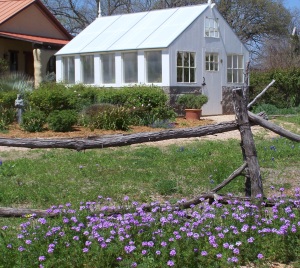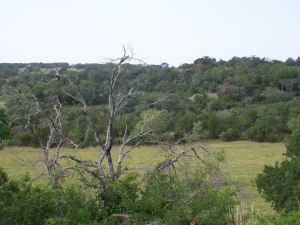
Now and again, I dream of what I would like for my very own bespoke retirement property … only that it wouldn’t be retirement, actually; I’ll be working until the day that the medical examiner’s van carts me away. Being retired just means that you do the work you want to do, not the work you have to do … but I would like to have a place done up to my own specifications. To start with – the land itself; an acre would do, maybe an acre and a half. I’d like a slightly rolling property, oriented towards the west to catch the sunset.. I’d like the land to be scattered with a few oak trees – craggy, with gnarled branches, but I’m not particular about what kind. Just oaks; post oaks, live oaks, red oaks, all for the shade, and to hang a wooden swing from a thick branch that parallels the ground. I don’t need a spectacular view, but I would like it to be mostly of countryside: perhaps a glimpse of a distant creek or river.

I’d want a good-sized vegetable and herb garden; expanded from what I have now. Raised beds would be ideal; filled with good soil and the proper nutrients. A good-sized kitchen garden would have to be surrounded with a stout wire fence. It is exasperating to have a good crop of tomatoes or squash coming in, only to discover that hungry rodents and deer – those enormous rats with hooves and antlers – have helped themselves. I’d have a good variety of kitchen herbs hanging from baskets. Herbs seem to do incredibly well in coconut-fiber lined baskets; this year I have one with a thyme plant spilling over the side and hanging halfway to the ground. Perhaps my garden and dream-house plan would include an arbor of unpeeled cedar poles, from which to hang the baskets of herbs. I’d have to have a place to shelter tender plants during those cold winter snaps when it gets down to or below freezing. Plants that scrape through a cold snap in San Antonio would not do as well during the winter in the Hills … so I likely I would need a permanent small greenhouse.

In addition to the existing trees, I would also plant more; at least a couple of almond verbenas, which start as shrubs and with any encouragement at all turn into medium-sized ornamentals. They aren’t much to look at, but the clusters of tiny flowers have the most amazing sweet almond smell. I’d also have some redbud trees for the look, and a couple of bearing fruit trees. My choice would fall on peaches, plums, and a good pecan tree. The trees would bridge the gap between the practical vegetable garden, and my dream ornamental garden; heavily tilted towards native and native-adapted plants which look after themselves. There would be roses, though – the hardy varieties which would be picked out more for their scent than their appearance. There would also be shrubs to attract birds, butterflies and bees, and a tangle of jasmine somewhere, which would bring their scent in through the windows on those spring days before the summer heat sets in.
And that leads to the house; and that is where I go off, into the the non-standard. I wouldn’t want a single big house, but an eccentric collection of cottages, set in the landscape described. I would like a little house for myself, and two or three others, one for my daughter, and another one or two which would serve as guest quarters when I had company, just enough set apart that we all would have privacy. I’d love to have a well, with one of those old windmill pumps, to bring the water to an above-ground concrete or wooden cistern on legs … just as I have seen on some old properties around the Hill Country.
As for the little houses on the property … I would prefer Craftsman-style bungalows or small Texas farmhouses, maybe even a one or two of them might be repurposed log cabins. The cabins would be the kind with a main room and a loft bedroom over, a kitchen lean-to on the back and a deep porch across the front. One or two of those would suit just fine, but even just a couple of those kit houses from Home Depot would work well, assuming that I could adorn them with vintage architectural surplus.
The final element would be a separate entertainment kitchen – just one large room set up to do brewing and cheese-making, an industrial-sized stove and a deep sink, and outside of it, another deep porch with a barbeque grill and enough space to throw a good party. I’d have an area nearby this all paved in brick or stone; and where the main garden ornament would be. That would be a fountain; a good-sized tall stone one, rather like the ones that adorn the private courtyards in the old houses I used to see in Spain, with a wide enough ledge to sit on surrounding the lower pool. And when I had a party, the guests could enjoy the sound of trickling water, the scent of almond verbena, and look at the late afternoon sun setting in the distance. I love what I have seen in the Sisterdale area; the hills, the creeks, the view to the west, with rolling hills. Ah – I might dream. It is my profession, of sorts; that dreaming thing.









Recent Comments